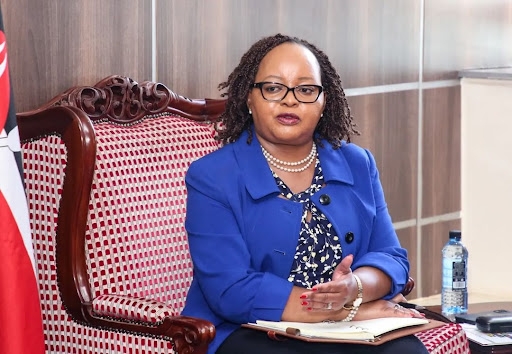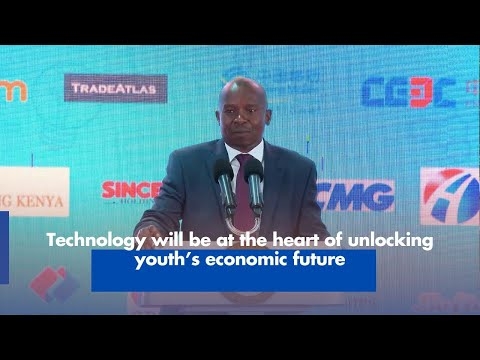When Dambisa Moyo’s Dead Aid came out in 2009, it sparked an avalanche of praise and criticism in equal measure.
Dead Aid: Why Aid Is Not Working and How There Is a Better Way for Africa was marketed as a book that unflinchingly confronts one of the greatest myths of our time: that billions in aid sent from wealthy countries to developing African states had failed to reduce poverty and increase economic growth.
Despite more than $1 trillion in development-related aid poured in, Dambisa argued, the recipients of this aid are not better off, in fact, much worse.
For the non-economists, it was the go-to easy read that had demystified the complexities of global finance and peculiarities international development. Her work experience and academic qualifications had the oomph one needs for their voices to be heard in such circles.
She had spent eight years as the head of economic research and strategy for sub-Saharan Africa at Goldman Sachs and a consultant for the World Bank. Her academic file had a PhD in Economics from Oxford University and a Master’s from the John F. Kennedy School of Government at Harvard University. Her voice carried weight.
On the World Bank blog, Shanta Devarajan, a senior director for Development Economics and acting World Bank Group chief economist, offered A (partial) defense, noting that the “book is right in the small, wrong on the large, and possibly right in the gargantuan.”
Small point: Africa would be better if it received private capital than foreign aid to supplement its own resources for investment. But Shanta argued that Africa was not there yet, that if Africa were an attractive destination for private capital foreign aid would no longer be needed. Larger point: that aid is wasted. Gargantuan point: aid creates incentives that makes recipient countries dependent on aid.
Criticisms were stringent and loud. The primary argument being that she didn’t know what she was talking about. Still, the book offered a historical cruise. She writes, for example, that “Between 1970 and 1998, when aid flows to Africa were at their peak, poverty in Africa rose from 11 percent to a staggering 66 percent.”
Even though the correlations between aid and poverty indices raised more questions than answers, her assertion that conditions attached to aid continue to thwart accountability mechanisms, encourage rent-seeking behaviour, siphon away talent, remove pressures from inefficient policies and institutions, and effectively guarantee that social capital remains poor and countries weak, were valid.
Her solution: shock therapy. “What if, one by one, African countries each received a phone call, telling them that in exactly five years the aid taps would be shut off —permanently?”
That was slightly over 10 years ago. She has since written a couple of books and lectures on wealth creation and perpetuation of poverty in the global economy, but the questions still remain, particularly role of the World Bank, which has been struggling to end poverty in developing countries for 70 years, since the 1944 conference in Bretton Woods.
The World Bank’s mission is to “end extreme poverty by reducing the share of the global population that lives in extreme poverty to 3 percent by 2030” and “to promote shared prosperity by increasing the incomes of the poorest 40% of people in every country”.
It does this by offering money and advice to poor countries through an amalgam of five institutions: International Bank for Reconstruction and Development, International Development Association, International Finance Corporation, Multilateral Investment Guarantee Agency, and International Centre for Settlement of Investment Disputes.
As their names suggest, these institutions give loans, give grants, invest in private firms and promote entrepreneurship, guarantee loans, and settle investment disputes.
IBRD and IDA are the World Bank proper. The International Development Association was formed in 1960 and has 173 member states. It provides grants and low-to-zero interest loans (called ‘credits’) to the world’s poorest countries. These grants and loans are channeled to projects that seek to boost economic growth reduce poverty, and improve lives.
IDA is the largest source of assistance to 74 poorest countries, and the single largest source of grants for basic social services. IDA loans are on concessional terms. Countries with a high risk of debt distress receive 100 per cent of financial assistance in the form of grants. Countries with medium risk of debt distress receive 50 per cent of assistance in grants. Other recipients receive regular loans with 38-year maturities or loans on blend terms with 30-year maturities.
IBRD, formed in 1944, is the largest World Bank institution, a global development cooperative with 189 member countries. It provides loans, guarantees, risk management and advisory services to middle-income and creditworthy low-income countries. These loans can be project loans, programme loans, or grant funds.
For every IDA grant or loan, or IBRD, there are always strings attached. In fact, one of the major criticisms of official aid are the policy strings attached, the so-called “Washington Consensus” in the 1980s — a set of economic policy prescriptions considered as a standard reform package promoted for crisis-wracked developing countries.
World Bank strings are fashioned after the original 10 standard policy recommendations under the Washington Consensus.
The Washington Consensus has been termed a neoliberal manifesto that have never really enjoyed a consensus. Each of the 10 policies, under the “Washington Consensus”, or their augmented forms, that promote free-market policies, form the foundation of a huge body of critical work across the developing world.
In Latin America, there is a long-standing fierce criticism, growing disillusionment with reforms, strong pursuit of alternatives to the World Bank blueprint. In Africa, most early studies showed these policies failed to improve socioeconomic conditions in Africa. A new analysis by Belinda Achibong, Brahima Sangafowa and Ngozi Okonjo-Iweala, note that:
Some of the key policy reforms of the Washington Consensus/SAP period of the 1980s and 1990s included privatization, fiscal discipline, and trade openness, that were introduced by IFIs as conditions for debt relief to highly indebted, economically constrained African countries. The expectation was that market-oriented reforms would correct domestic policy-induced distortions in prices, such as overvalued exchange rates, subsidies that led to artificially low agricultural commodity prices, high wage rates, low interest rates, and subsidized agricultural input prices, which introduced inefficiencies in resource allocation, worsening shortages and reducing economic output.
World Bank, which portrays itself as a beacon of knowledge and expertise on development and macroeconomic issues — through its research, publications, policy advice and training — , pushes poor countries to adopt these policies as a precondition for grants and loans.
The prescriptions are packaged as ‘best practices’ and deposited on the desks of ministers and technocrats in African, accompanied with lengthy theoretical grounding and ‘robust’ empirical support, and an addendum of case studies. These documents are the ‘how to’ guides, for fiscal consolidation, private sector activity, infrastructure development, debt servicing.
What if, as Dambisa Moyo, suggested, African countries were to collectively cut the aid tap and shut it off permanently? What would happen to Africa if aid stopped flowing? How much do African governments get from the World Bank every year? Is it worth the burden?
As of June 30, 2021, IDA’s commitments totaled $36 billion, about 70 per cent going to African countries to support 297 projects. Since it was established in 1960, IDA has provided a total of $458 billion to 114 countries — money from rich countries that meet every three years to replenish the organisation’s account.
Over the past three years, annual commitments have averaged $29.4 billion. If African countries receive 70 per cent of IDA grants, this amounts to $22 billion a year, on average.
The recently released Annual World Bank Report show unprecedented record levels of financing, an upsurge Covid-19 needs. The bank committed 98.8 billion in loans, grants, equity investments and guarantees to partner countries and private businesses.
Sub-Saharan Africa received $35.2 billion, with typical policy reform conditions in the middle of a pandemic. A report from the Center for Global Development criticized the World Bank for attaching too many strings to Covid-19 aid.
Yet even at such high levels of aid, the figures pale in comparison to the money siphoned out of the continent. Unctad 2020 report on Illicit Financial Flows shows Africa loses about $88.6 billion in illicit capital flight every year, mainly from tax avoidance, abusive profit-shifting, trade mis-invoicing, and corruption.
According to Léonce Ndikumana, from Tax Justice, “African resource-rich countries lose large amounts of tax revenue through manipulation of transfer pricing by multinational corporations that take advantage of tax havens. Oil-rich African countries account for over 55 percent of total capital flight from the continent.”
Multinational companies are the poster children of the Washington Consensus, and the biggest beneficiaries of trade liberalisation, push for privatisation of state enterprises, and abolition of barriers to entry for foreign firms.
The billions African countries lose through illegal financial flows far surpass the aid and foreign direct investments to Africa, and challenges the narrative that African countries do not have the resources to develop. Unctad report shows that curbing illicit capital flight could generate enough capital by 2030 to finance almost half of the $2.4 trillion needed by sub-Saharan African countries for much-needed climate change adaptation and mitigation measures.
Rethinking aid, will call for the rethinking of the role of World Bank in Africa’s development. Inappropriate economic policy conditions attached to World Bank aid undermines national policy making, delays aid flow, and often fails to deliver to poor people. The practice must stop.
Or even better, are African countries ready to shut off the aid taps—permanently?
Mutemi Kiama is a social justice activist, a community organiser and a strategic communications for advocacy consultant











